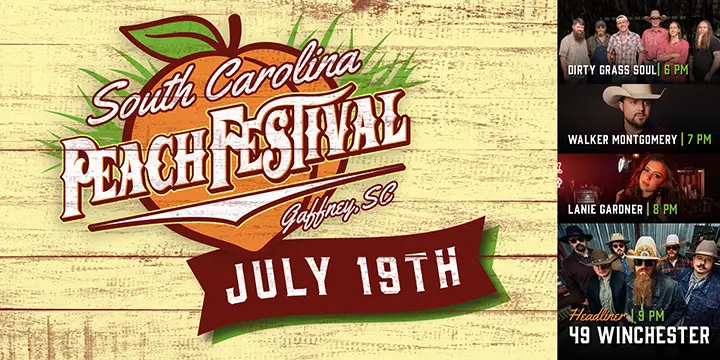A Ledger reader came by our office last week asking about the spelling of Thomson Park. That’s correct. THOMSON without a P. I began searching our archives for the history of the park and found numerous references to Thomson Park dating to 1931. Although I found no direct evidence, my best guess is that R.C. Thomson or his heirs donated the land to the city to build a park.
As you will read below, it was once a pond that was filled in to build the park. I did find a reference to the lot across Petty Street which was apparently a part of the original gift, but was deeded back to the Thomson family in 1961 as it was not being used for its intended purpose — a playground. Shortly thereafter my father purchased the lot and built a house. We moved there from Fairview Avenue when I was in the fifth grade.
Read on and you will discover how Tank Branch got its name.
The following is from the July 15, 1996 Ledger by former Ledger editor Bill Gibbons in his Bill-Board column.
We recently commented on the fine job by the Tank Branch Garden Club in planting and caring for the area where Granard meets Logan Street. The beautification program here should be incentive to all of us to think more about beautification of our city and county.
The area under discussion will be further developed when pipe is placed in the present gully and fill dirt hauled into the area. Concerning our comments, Floyd Baker, Dean of Cherokee County’s Distinguished Citizens, (now official historian appointed by billboard), holder of almost every good citizens award, and just plain nice guy, came through again with some information not generally known … in fact … not known to me at all. Mr. Baker, who was a former newspaper man himself, writes: “Recently Bill’s billboard bore brief bit ’bout beautiful blooming border built by busy Garden Club . . . Wheee, b-b-b’s buzzing my brain. Say, Bill, bounce this bunk. “The club mentioned by Bill bears the name . . .Tank Branch Garden Club. “So, what I started out to write about was how the branch got its name Tank.
“In early 1800’s South Limestone Street terminated at Race Street (now College Drive). All that “piece, parcel or lot” of land lying along the south side of Race Street from Southern Railway right-of-way running east to Petty Street, thence south on Petty Street for a distance of what is now several blocks, thence west to railway right-of-way, was owned by R. C. Thomson who had moved to Gaffney from his homeplace in Union County along the fertile bottoms of the Pacolet River.
“His new home was a large two-story house where Kassler Apartments now stand. In the rear of the residence were a servant house, cotton house, stables, carriage house, gardens, small necessary house, etc. The rest of the acreage to the south side of what is now Thomson Park was planted in cotton, corn and watermelons and cantaloupes … it was rich, productive land. “Where Thomson Park is now located was a fish pond (filled in during WPA days by poverty labor with shovels, hoes and wheelbarrows). South of the pond, across to the railroad right-of-way, was thick forest with beautiful wild flowers, honeysuckle, sweet shrubs, flag lilies. buttercups and the like. Overflow from the fish pond formed a small branch which ponded-up against the Southern Railway dirt fill. On the south side of the pond a wooden tank was erected to furnish water to train engines which were propelled by steam. The track was a single line and train, boilers were fired with cord wood, fed into the engine’s furnace. Wood was racked-up a few miles apart where engines stopped to have the tenders filled with fuel.
“The pond was known as TANK pond. It was a boy’s paradise, with tadpoles, salamanders, bull frogs, crayfish, water snakes, terrapins, minnows, small perch, bottle flies, cat tails, snake doctors and lots & lots of gooey soft mud to wade in.
Overflow from the pond ran through a stone tunnel under the railroad, across the Spartanburg Road, forming a good-sized branch with willows and other small trees arching over it, where cat birds and wrens flittered and warbled their happy notes, and where a bubbling spring captured little boys, who would kneel and bury their faces in the sweet, cold water which would bite at the taste buds and completely quench the thirst.
“And that, dear friends, is how Tank Branch got its name. It was simply a branch flowing from the tank pond. “Where the water from the pond ran through under drain it fell several feet, washing out a swimming hole and delighting little boys. Kids wore two garments … a cotton waist with big white buttons around the waist band, and a pair of linen pants which were buttoned to the waist. These garments could be doffed in a jiffy and into the swimming hole the lads would splash, kickin’ water on each other and duckin’ one another. The pond was at the edge of the road and when a buggy or wagon was seen to approach, the kids would immerse to the neck and remain in that position until the vehicle was out of sight. Sometimes this would take a long time, especially if a lazy horse, pulling a slow-moving buggy go a whiff of the cool water.
“Pretty blue modeling clay was close by and budding artist would fashion marbles, dolls, animals and dishes out of the clay, dry it in the sun and finish it almost as if it had been baked in a kiln.
“Them were the good ol’ days.”




Loading Comments